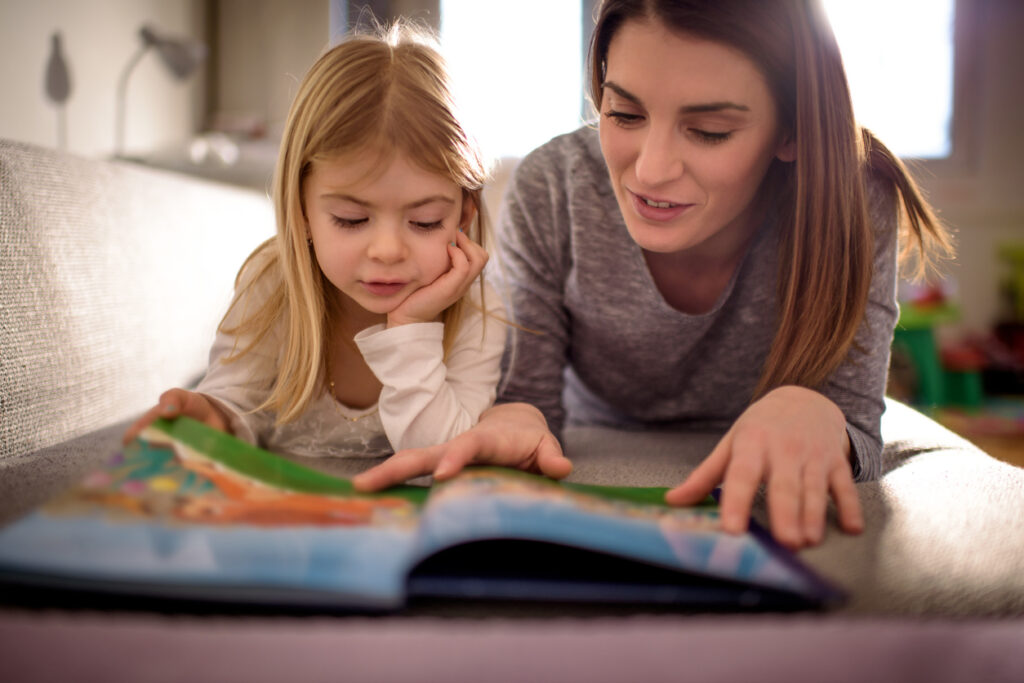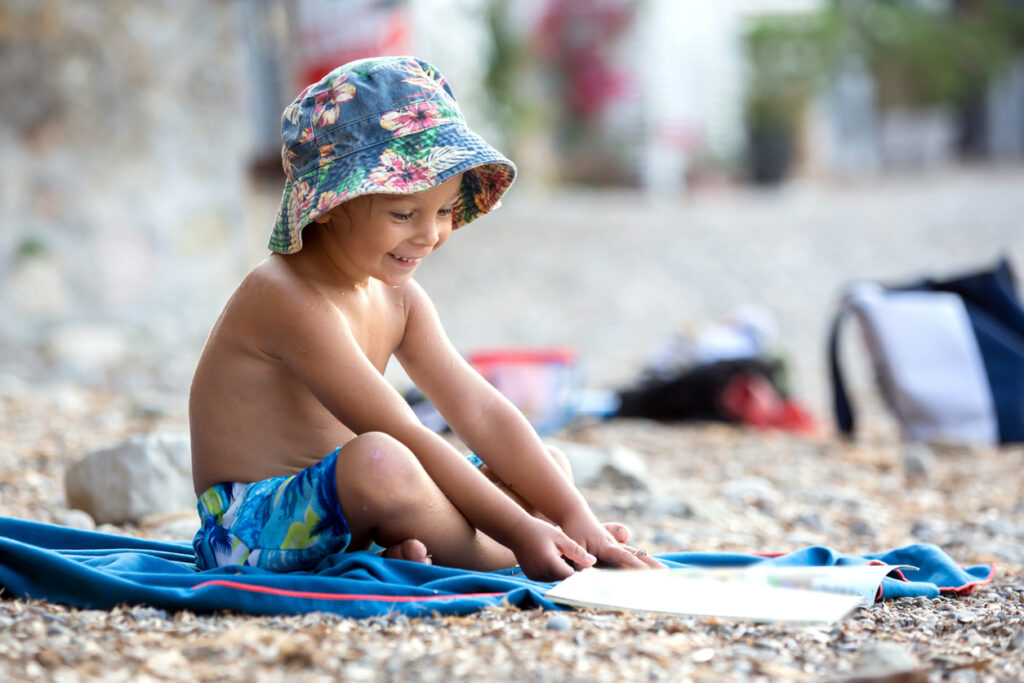Let’s face it: there are a lot of distractions out there that can push reading way down the list of fun activities that children will enjoy. So, as a parent, what can you do to make sure that sitting down with a book remains a fun and engaging activity for your little one?
That’s what we’re here to help you with. Sure, we’re no experts when it comes to teaching kids how to read, but we like to think we can tell a good story or two – just chat with any of our enthusiastic aquarists and we think you’ll see what we mean!
So, with that in mind, here are our top tips on how to make reading fun for kids. And since we’re all about marine animals, we’ve also included a few of our favourite ocean-themed reads that your fish-mad youngster may like to try.
5 tips for reading with kids – and how to keep things fun
Do you find that your little one is easily distracted when you sit down to read together? There are lots of reasons why this might be the case, so here are our top suggestions on how to keep them engaged with the words in front of them.
1. Find books that align with their interests
If your child has expressed an interest in a particular topic, it’s worth straying away from the teacher-approved reading list to let them focus on what they enjoy. Whether it’s dinosaurs, space or life beneath the ocean waves – there are books out there for all types of readers, so focusing on what they’re interested in most is a surefire way to keep them engaged for longer.

2. Know that it doesn’t just have to be books
While illustrated children’s books are usually a big hit with little readers, remember that you aren’t just limited to physical books when it comes to reading with your child. From blogs listing fun facts about their favourite animals to interactive digital stories and games, there are tons of ways to encourage your child to read without actually picking up a book – perfect if they seem disengaged when browsing the bookshelves.
Does your child love fish and other creatures of the deep? The Tynemouth Aquarium blog is packed with stories, guides and fun facts for them to read.
3. Change up where and when you read
While some children like routine, others hate it, so if your kid falls into the latter camp, it’s definitely worth mixing up where and when you read together. For instance, rather than taking a book off the shelf in the same place every evening after school, try reading in the park or sitting in your garden. You could even align where you read with where the book is based; a day at the beach could be the perfect place to read a story about fish, for example.
4. Take time to look up and research things your child is interested in
Reading shouldn’t be a static, regimented activity. So, to keep things as engaging as possible, take time to pause on certain words, phrases and names that your little one has a question about. Whether it’s a particular species of fish in their favourite ocean-based tale or a place name in a country they’re not familiar with, pausing to look up and research different things together will bring a new level of fun, engagement and discovery.

5. Mix things up with books and stories of different lengths
Not only can the school day be busy for young minds, but there are plenty of distractions to contend with when they get home too. That’s why you should preempt reading fatigue by introducing different formats, materials and story lengths into the mix.
A book of short stories will be ideal for evenings when your child is tired and not up for a long reading session, while you can also have a longer novel running concurrently for when they’re prepared to sit for longer. Don’t be afraid to introduce other materials into the mix either; so long as they’re having fun and fully engaged, any reading is good reading.
Our favourite fish-themed children’s books for young ocean lovers
There’s something about the deep blue sea that sparks the imagination of children and adults alike. So, here are our top recommendations for ocean-themed books that we’re confident both you and your little one will love reading together.
Earth’s Incredible Oceans by Jess French
If you’re looking for a reliable and digestible compendium all about life beneath the waves, Jess French’s Earth’s Incredible Oceans is about as good as it gets. Covering animals, oceans, habitats and geography, this is a dip-in, dip-out read that’s genuinely fun and educational, complemented by beautiful illustrations by Clair McElfatrick.
The Coral Kingdom by Jennie Webber
Thanks to its easy rhythmic verses and charming illustrations, The Coral Kingdom by Jennie Webber is ideal for little readers between the ages of 4-6. The book covers tons of reef-dwelling animals, some of which are on display within our Tropical Seas exhibit, and finishes with a subtle but digestible message about the importance of protecting our ocean habitats, which should resonate with even the youngest readers.

Somebody Swallowed Stanley by Sarah Roberts
Combining a beautifully written and illustrated children’s story with a timely message about the hazards of plastic pollution; Somebody Swallowed Stanley by Sarah Roberts is the ideal book for parents keen to teach their children about the importance of protecting our natural world. It’s so good, in fact, that Tom Hardy read this book aloud as part of the CBeebies Bedtime Stories series. Essential reading!
We hope you’ve enjoyed this guide and that it helps you to inject more fun into your child’s reading. Remember, there’s lots to learn and discover at Tynemouth Aquarium, so tap here to book your tickets and plan your next visit.
